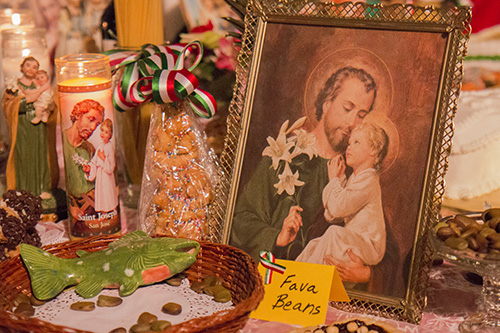St. Joseph’s altars: What they mean and where to find them
|
The St. Joseph’s altar is one of those Catholic traditions, in this case a Sicilian Catholic tradition, that, through some very creative adaption, south Louisiana has made its own. Among all the breads and cakes shaped into religious symbols — a monstrance, chalice, cross, heart, dove, Bible — it’s not unusual to find an alligator. A Lenten symbol, perhaps. The fava bean is also ubiquitous at New Orleans altars.
